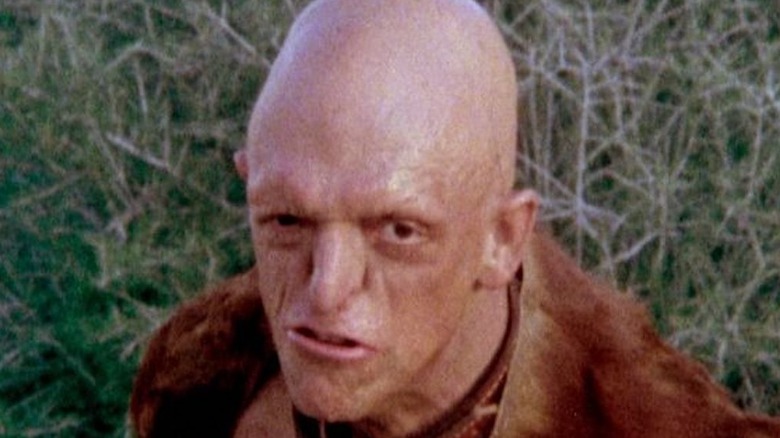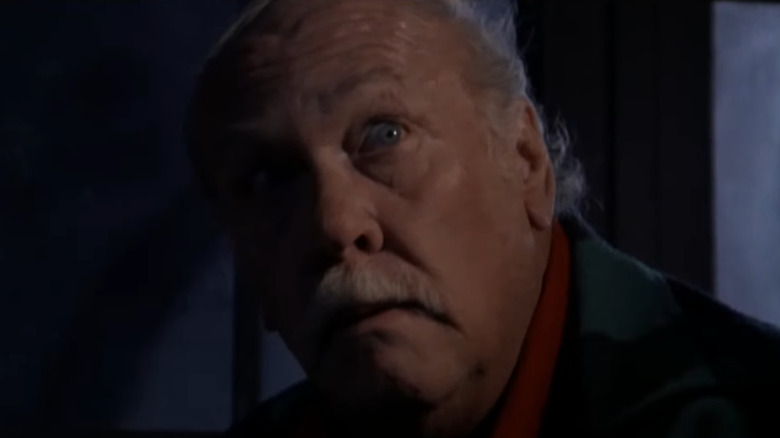The Death In The Hills Have Eyes That Was The Most Surprising
Wes Craven spent more than 40 years behind a camera, directing some of the most iconic horror films in history. "A Nightmare on Elm Street" might be his best-known work, and when it was released in 1984, it completely redefined the genre. A decade later, when the rest of the filmmaking world had just caught up with him, Craven changed the game again when he released "Scream."
But the auteur's most abominable and stomach-turning classic predates both "Nightmare" and "Scream." In 1977's "The Hills Have Eyes," Craven tells the story of the Carter family -– a group of intrepid suburbanites who find themselves stranded in the Mojave desert, prey to a group of psychopathic cannibals who dwell in the hills. Over the movie's 90-minute runtime, Craven makes several bold statements about the horror genre: gore is inevitable, people can be far scarier than monsters, and no one is truly safe. This was especially true for Big Bob, the patriarch of the Carter family and the first to die.
Of all the onscreen casualties, Bob's death wasn't necessarily the most unexpected. But it was, in a way, almost certainly the most surprising.
Big Bob's surprising death
In the film, Bob (played by actor Russ Grieve) is a recently retired police officer with a distaste for minorities, anger management issues, and a debilitating heart condition. For the first third of the movie, Bob is the crotchety foil to the rest of the Carter family's calm-headedness and good spirits, and during the first encounter with the cannibal hillpeople, his death is almost an inevitability.
In the scene, Bob nearly runs himself to death, triggering his heart condition. He then collapses into the dirt, making himself an easy victim for the villains. But following his collapse, there's no immediate face-bludgeoning. No stabbing. No shooting. In fact, we don't see Bob again for nearly 20 minutes. And when he does reappear, he is very much worse for wear.
Near the film's halfway point, the hysterical and wailing Carter family finds Bob crucified to a tree, skin cracked and charred by fire, his death rattle pushing the last wisps of smoke from his throat. Big Bob's death absolutely raised the stakes for his family, putting them on the offensive for the first time in the story. But the way in which he died -– a blackened, smoking, crucified husk -– raised the stakes for the next 40 years of horror films.

